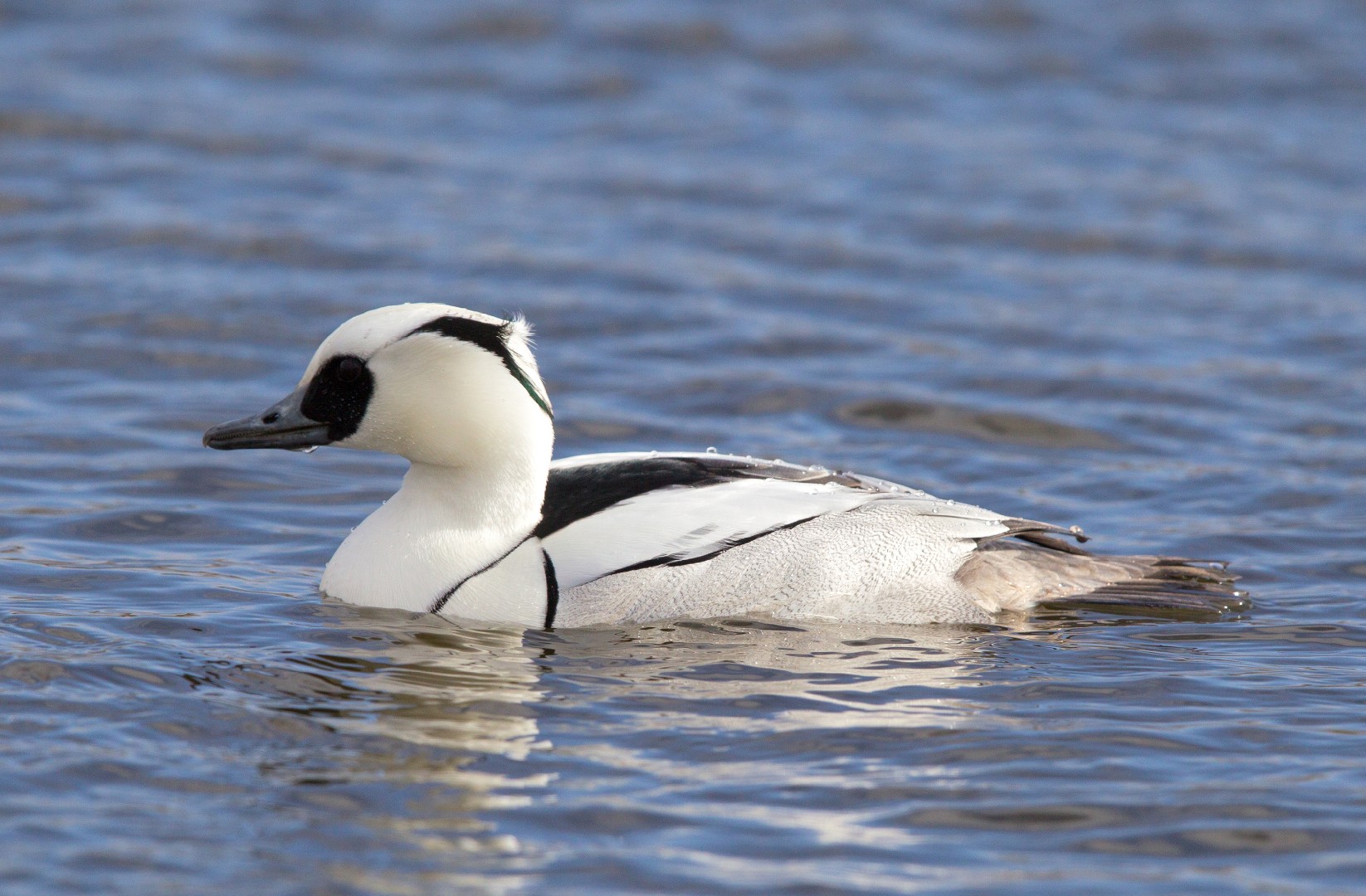Smew
A species of Smews Scientific name : Mergellus albellus Genus : Smews
Smew, A species of Smews
Botanical name: Mergellus albellus
Genus: Smews
Content
Description People often ask General Info
 Photo By Andreas Trepte , used under CC-BY-SA-2.5 /Cropped and compressed from original
Photo By Andreas Trepte , used under CC-BY-SA-2.5 /Cropped and compressed from original Description
The drake smew, with its 'cracked ice' and 'panda' appearance, is unmistakable, and looks very black-and-white in flight. The females and immature males are grey birds with chestnut foreheads and crowns, and can be confused at a distance with the ruddy duck; they are often known as "redhead" smew. It has oval white wing-patches in flight. The smew's bill has a hooked tip and serrated edges, which help it catch fish when it dives for them. The smew is 38–44 cm (15–17 in) long, with a wingspan of 56–69 cm, and a weight 450–650 g. 
Size
37-43 cm (14.5-17 in)
Colors
Brown
Black
Gray
White
Life Expectancy
9 years
Nest Placement
Cavity
Feeding Habits
Smew, a piscivore, predominantly feasts on small fish, supplemented with aquatic invertebrates and some plant matter. Smew utilizes adept diving to capture prey and exhibits unique feeding behaviors tailored to aquatic hunting. Such preferences highlight a specialized diet within its habitat.
Habitat
The smew breeds in northern taiga freshwater environments, preferring lakes, rivers, and muskegs amid forested lowlands. Nesting occurs in trees, and the habitat includes fish-abundant waters. Winter migration leads to sheltered coastal areas, estuaries, and inland lakes with submerged structures such as drowned trees for cover. The habitat depth typically does not exceed 6 meters.
Dite type
Piscivorous
People often ask
General Info
Feeding Habits
Bird food type
Distribution Area
This species breeds in the northern taiga of Europe and the Palearctic. It needs trees for breeding. The smew lives on fish-rich lakes and slow rivers. As a migrant, it leaves its breeding areas and winters on sheltered coasts or inland lakes of the Baltic Sea, the Black Sea, northern Germany and the Low Countries, with a small number reaching Great Britain (for example, at Dungeness), mostly at regular sites. Vagrants have been recorded in North America. On lakes it prefers areas around the edges, often under small trees. The smew breeds in May and lays 7-11 cream-colored eggs, incubated by the female for 26–28 days. Ducklings leave the nest soon after hatching and learn to fly within about 10 weeks. It nests in tree holes, such as old woodpecker nests. It is a shy bird and flushes easily when disturbed. The smew is one of the species to which the Agreement on the Conservation of African-Eurasian Migratory Waterbirds (AEWA) applies. It is not considered threatened on the IUCN Red List, though its population is decreasing. 
Species Status
Not globally threatened.